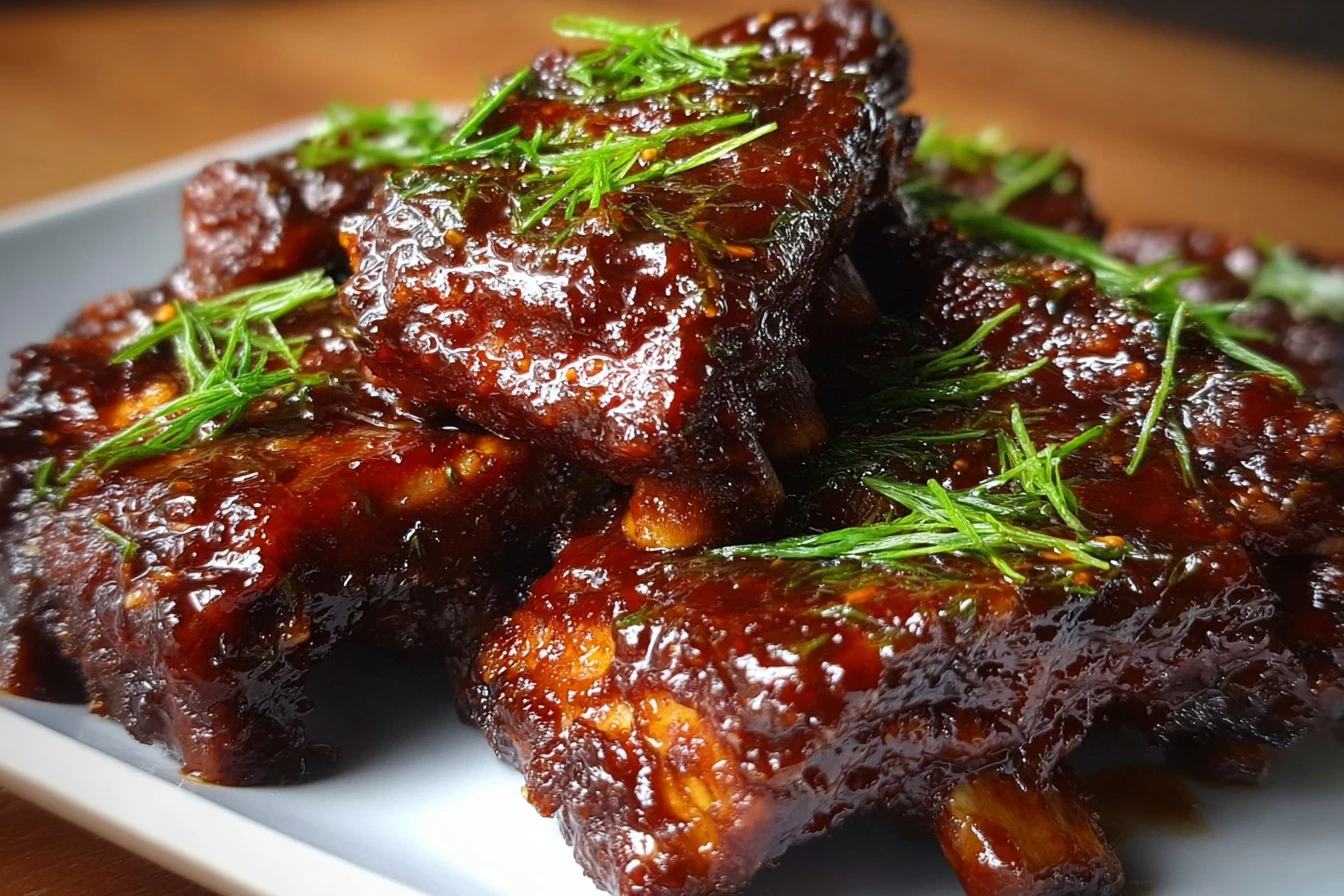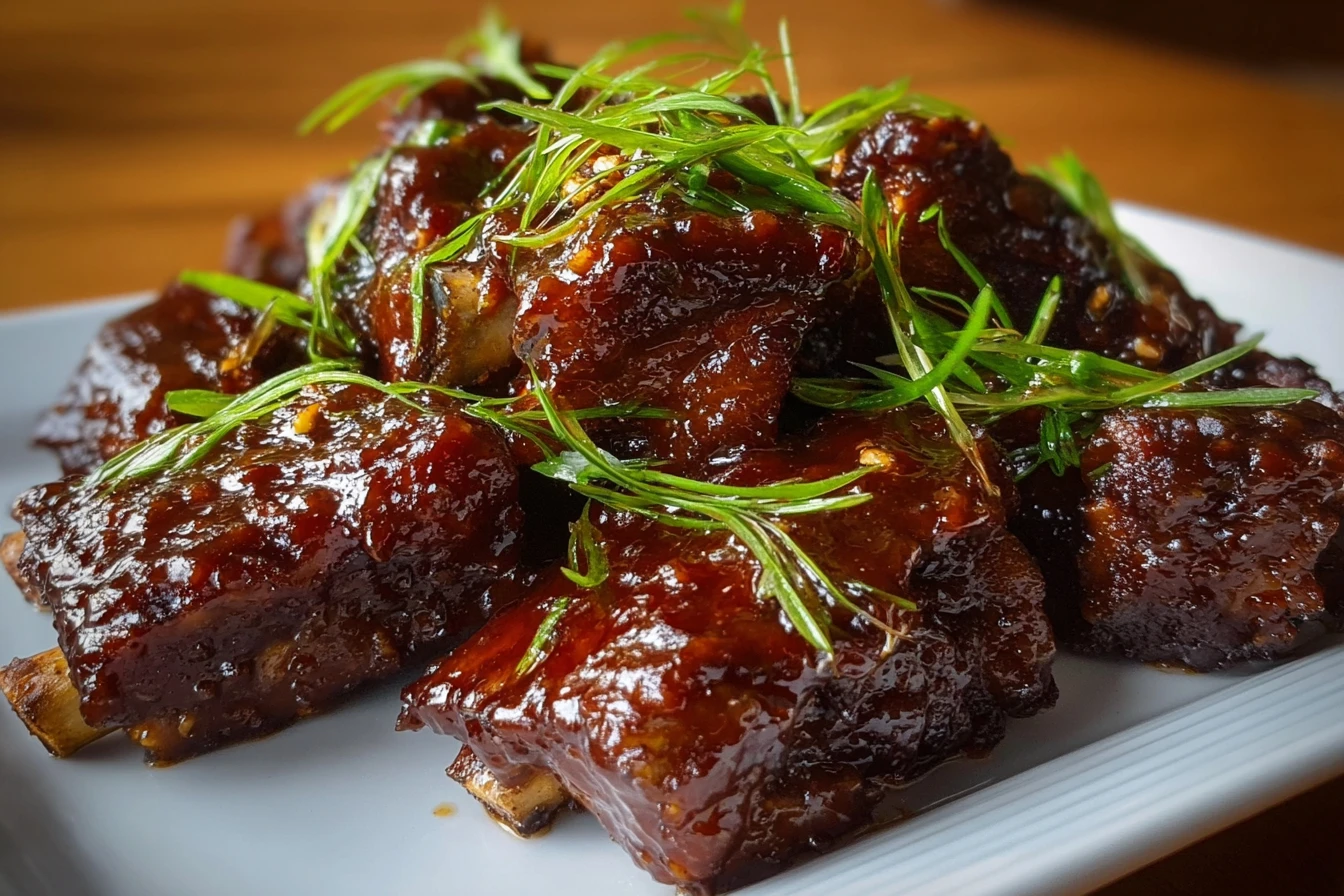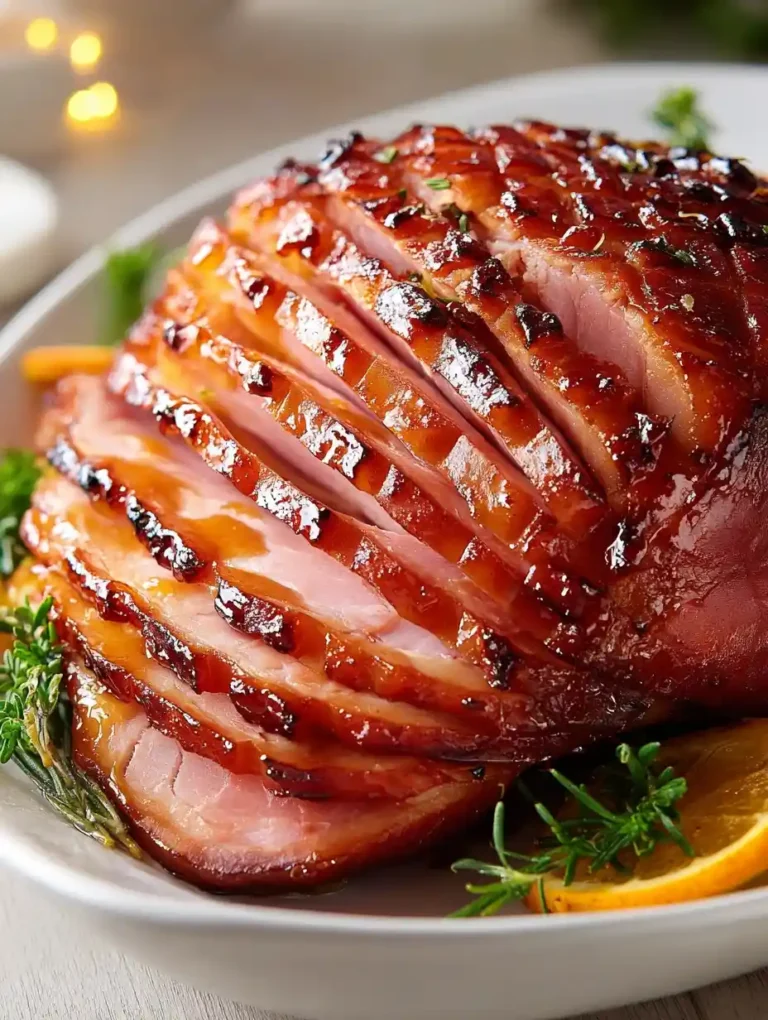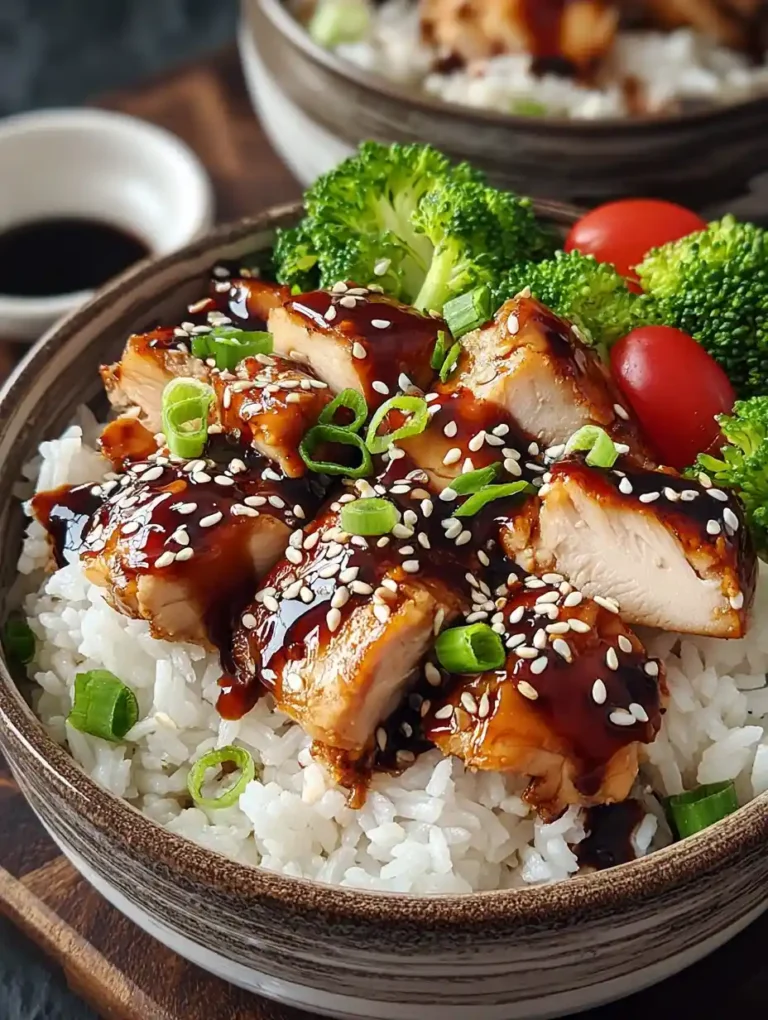Table of Contents
Sticky Asian Pork Ribs
Imagine the aroma of tender, succulent pork ribs glazed with a sticky, sweet, and savory sauce that embodies the essence of Asian flavors. The mere thought of indulging in these easy sticky Asian pork ribs can make your taste buds tingle with anticipation. If you’re on a quest for the best sauce for sticky pork ribs that will leave you craving for more, look no further. In this recipe, we’ll explore how to cook sticky pork ribs that are bursting with Asian-inspired goodness.
Let’s get started on this culinary adventure!
Asian cuisine is known for its intricate flavors and vibrant spices, and these sticky pork ribs perfectly encapsulate that essence. The slow cooker method enhances the tenderness of the meat while allowing it to soak up all the rich flavors of the marinade. Whether you’re a fan of homemade sticky Asian pork ribs or looking to impress your guests with a show-stopping dish, this recipe is sure to delight.
Get ready to experience a symphony of flavors as we delve into the art of creating these delectable sticky Asian pork ribs.
Why You’ll Love This Recipe
If you love the idea of a dish that effortlessly combines sweet, savory, and umami flavors into each bite, these sticky Asian pork ribs are a must-try. Here are a few reasons why this recipe stands out:
1. The marinade creates a perfect balance of sweet and savory notes, elevating the taste of the pork ribs.
2. Cooking these ribs in a slow cooker makes the meat incredibly tender, allowing it to effortlessly fall off the bone.
3. This recipe is weeknight-friendly, requiring minimal hands-on time for maximum flavor.
4. The sticky glaze that coats the ribs caramelizes beautifully, adding a delightful crispiness to each bite.
Ingredients

For this sticky Asian pork ribs recipe, you’ll need the following ingredients:
– Pork ribs (approximately 3-4 pounds)
– Soy sauce, hoisin sauce, honey, garlic, ginger, and rice vinegar for the marinade
– Brown sugar, sesame oil, and your choice of spices for the glaze
These ingredients come together to create a harmonious blend of flavors that will transport you to the bustling streets of Asia with every bite.
Step-by-Step Instructions
1. Begin by preparing the marinade by combining soy sauce, hoisin sauce, honey, minced garlic, grated ginger, and rice vinegar in a bowl.
2. Place the pork ribs in a large resealable bag and pour the marinade over them, ensuring each rib is coated evenly. Refrigerate for at least 2 hours or overnight for maximum flavor infusion.
3. Once marinated, transfer the ribs and the marinade to a slow cooker. Cook on low for 6-8 hours until the meat is tender and easily pulls apart.
4. In a saucepan, combine brown sugar, sesame oil, and your choice of spices to create a glaze. Brush the glaze over the cooked ribs and broil in the oven for a few minutes until the glaze is sticky and caramelized.
5. Serve the sticky Asian pork ribs hot, garnished with sesame seeds and sliced green onions for an authentic touch.
Tips for Success
1. For an extra layer of flavor, consider adding a splash of pineapple juice to the marinade for a tropical twist.
2. To achieve a crispy exterior, broil the ribs in the oven after glazing to caramelize the sauce.
3. If you prefer a spicier kick, add a pinch of red pepper flakes or a drizzle of chili oil to the marinade.
4. Make sure to allow the ribs to rest for a few minutes before serving to lock in the juices and flavors.
Variations & Substitutions

If you’re looking to switch things up, here are a few creative options for your sticky Asian pork ribs:
1. Vegetarian Twist: Substitute the pork ribs with firm tofu or seitan for a plant-based alternative.
2. Low-Carb Option: Replace the brown sugar with a sugar substitute and serve the ribs with a side of cauliflower rice.
3. Spicy Variation: Amp up the heat by adding sriracha or gochujang to the marinade for a fiery kick.
4. High-Protein Swap: Use boneless pork loin or chicken thighs for a protein-packed meal that’s equally delicious.
What to Serve With It
Pair these sticky Asian pork ribs with steamed white rice and stir-fried vegetables for a complete and satisfying meal. For a refreshing contrast, consider serving a side of pickled cucumbers or a tangy Asian slaw. This dish is perfect for cozy nights in or festive gatherings with loved ones.
Storage & Reheating
To store any leftover ribs, place them in an airtight container in the refrigerator for up to 3 days. For longer storage, you can freeze the ribs and reheat them in the oven for a few minutes until heated through. To maintain the sticky glaze and tender texture, sprinkle a few drops of water over the ribs before reheating.
Nutrition Facts
Per serving, these sticky Asian pork ribs provide:
– Calories: 350
– Protein: 25g
– Carbohydrates: 15g
– Fat: 20g
– Fiber: 2g
– Sugar: 10g
– Sodium: 800mg
These ribs are a flavorful indulgence suitable for those following a high-protein diet.
Common Mistakes to Avoid
1. Overcooking the ribs, which can result in dry and tough meat.
2. Not marinating the ribs for a sufficient amount of time, leading to a lack of flavor penetration.
3. Skipping the broiling step, which helps caramelize the glaze and elevate the dish’s visual appeal.
FAQ Section
1. Can I grill the ribs instead of using a slow cooker?
Yes, you can grill the ribs over medium heat, basting them with the marinade throughout the cooking process for a smoky flavor.
2. Can I make these ribs ahead of time for a party?
Absolutely! You can marinate the ribs the day before and cook them just before your guests arrive for a stress-free entertaining experience.
3. Is it necessary to remove the membrane from the ribs?
While it’s not mandatory, removing the membrane allows the flavors to penetrate the meat more effectively for a tastier outcome.
4. Can I use baby back ribs instead of spare ribs?
Yes, baby back ribs work well in this recipe and offer a slightly leaner option with a tender texture.
5. How can I adjust the level of sweetness in the glaze?
If you prefer a sweeter glaze, increase the amount of honey or brown sugar in the recipe. For a less sweet option, reduce the sugar content accordingly.
Conclusion
In conclusion, these sticky Asian pork ribs are a delightful marriage of flavors that will undoubtedly please your palate. The combination of sweet, savory, and sticky elements creates a dish that is both comforting and exciting to eat. Whether you’re a fan of Asian cuisine or simply looking to expand your culinary horizons, this recipe is a must-try.
So, gather your ingredients, fire up your slow cooker, and embark on a culinary journey that will transport you to the bustling streets of Asia with every bite. Don’t forget to share your feedback on this homemade sticky Asian pork ribs recipe and spread the joy of flavorful cooking with your loved ones.
If you enjoyed these sticky Asian pork ribs, consider trying out my other Asian-inspired recipes for a culinary adventure that never disappoints. From Korean sticky pork ribs to crispy sticky Asian ribs, there’s a world of flavors waiting for you to explore.

Sticky Asian Pork Ribs
Tender, succulent pork ribs glazed with a sticky, sweet, and savory sauce infused with Asian-inspired flavors. These sticky Asian pork ribs are easy to make, bursting with rich taste, and will leave you craving for more.
Ingredients
- 3-4 pounds pork ribs
- 1/2 cup soy sauce
- 1/4 cup hoisin sauce
- 1/4 cup honey
- 4 cloves garlic, minced
- 1 tablespoon grated ginger
- 1/4 cup rice vinegar
- 1/2 cup brown sugar
- 2 tablespoons sesame oil
- Spices of your choice
- Sesame seeds and sliced green onions for garnish
Directions
-
Prepare the marinade by combining soy sauce, hoisin sauce, honey, garlic, ginger, and rice vinegar in a bowl.
-
Place the pork ribs in a resealable bag, pour the marinade over them, and refrigerate for at least 2 hours or overnight.
-
Transfer the marinated ribs to a slow cooker and cook on low for 6-8 hours until tender.
-
In a saucepan, combine brown sugar, sesame oil, and spices to create a glaze. Brush over the cooked ribs and broil in the oven until sticky.
-
Serve hot, garnished with sesame seeds and sliced green onions.



